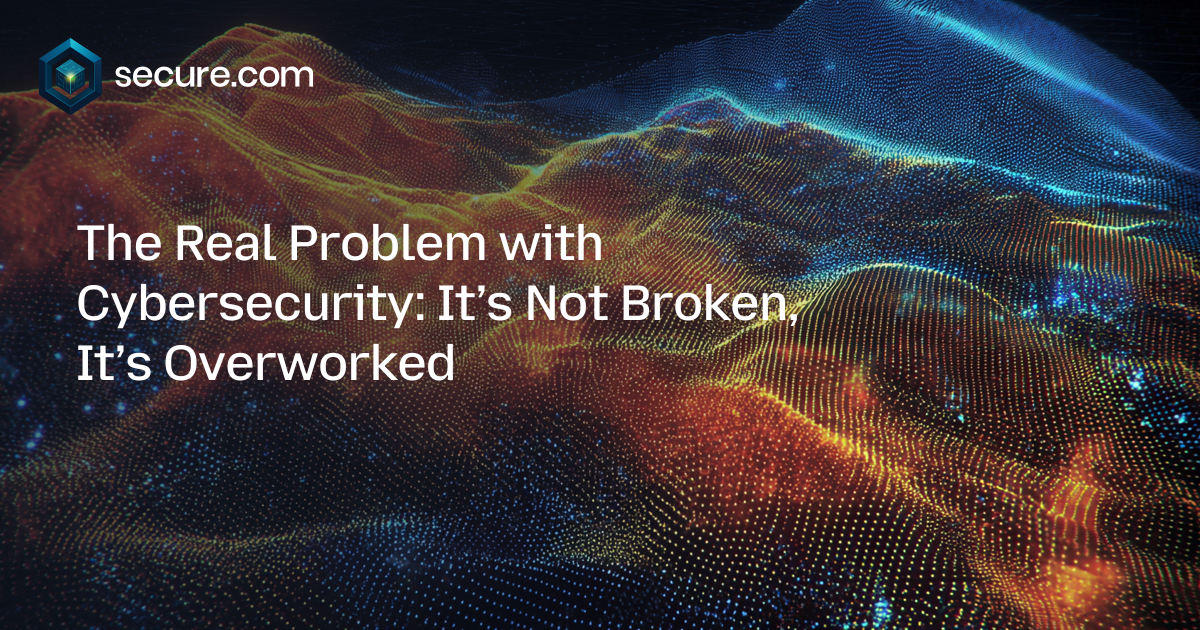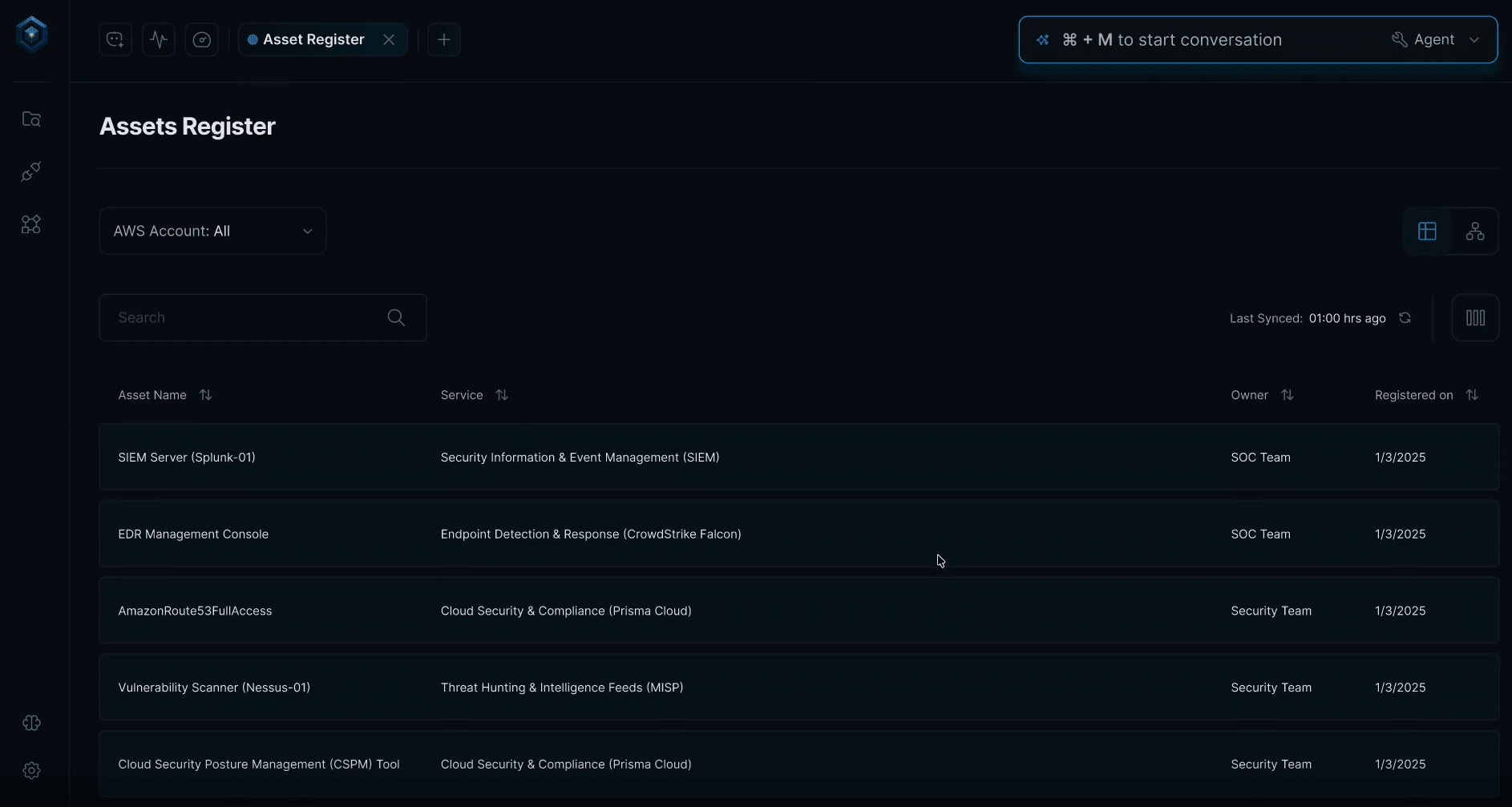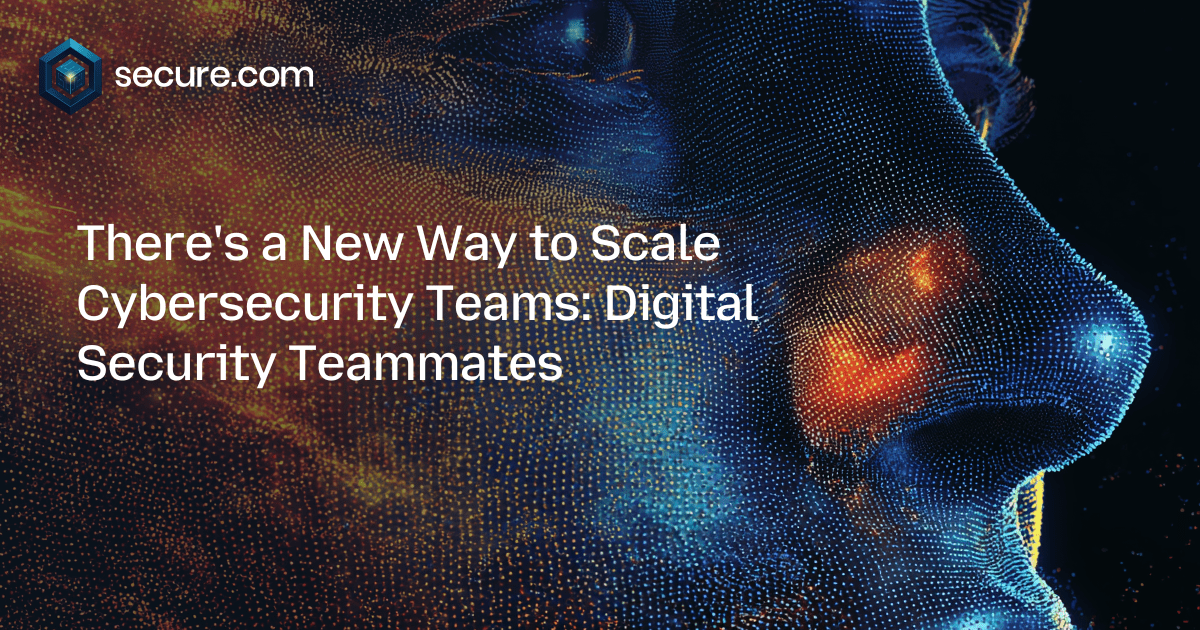The Real Problem with Cybersecurity: It’s Not Broken, It’s Overworked
Cybersecurity isn’t failing because tools are weak—it's failing because humans are drowning in alerts, false positives, and overwhelming workloads.
Cybersecurity isn’t failing because tools are weak—it's failing because humans are drowning in alerts, false positives, and overwhelming workloads.

Most breaches don't happen because technology fails. They happen because people are buried under too much of it. SOC teams handle thousands of alerts every day, and around 83% turn out to be false positives. Analysts spend close to 3 hours a day sorting through this noise, leading to burnout and missed threats. Fragmented tools and constant context switching make it even harder to stay focused.
The real answer is not another dashboard or data feed. It is about giving humans their focus back through smarter automation and Digital Security Teammates that cut false positives, reduce triage time by as much as 60%, and help defenders concentrate on what truly matters.
Every year, organizations spend more on cybersecurity tools, yet breaches continue to make headlines. The global average cost of a data breach reached $4.88 million in 2024 (IBM) a figure that should shock an industry armed with advanced detection, AI-driven analytics, and threat-intelligence pipelines.
But the problem isn't that digital security is broken. It's that people dealing with cybersecurity are overworked.
Security teams aren't failing because of poor technology or weak intentions. They're drowning in operational noise, managing an average of 4,484 alerts a day, of which 83% are false positives (HelpNetSecurity). Analysts are spending nearly three hours daily on manual triage, leaving little time for the investigations that actually stop attacks.
As one practitioner vented on r/cybersecurity:
"I spend all day checking alerts that never go anywhere, then come back to hundreds more. It never ends." That sentence captures the fatigue defining modern defense.
Security Operations Centers (SOCs) are running on mental overdraft. Every false alert drains focus and energy, slowly wearing down an analyst’s ability to think clearly and respond quickly.
Multiple alerts go uninvestigated, and many teams admit they sometimes mute or ignore notifications just to stay functional. It is not a sign of neglect but a sign of overload.
When most security professionals report feeling emotionally overwhelmed, the real question is no longer whether the tools work but whether the people behind them can keep up. What should be a command center for defense often feels like a pressure chamber where exhaustion itself becomes the biggest security risk.
Most organizations didn’t set out to overburden their defenders; it happened accidentally. The pursuit of “best-of-breed” security has created sprawling stacks where every new product adds dashboards, alerts, and APIs, but rarely eliminates older ones.
IBM reports that 95% of security leaders now manage overlapping tools, and each additional system increases context-switching time. Every switch drains focus and fragments data.
As one Redditor put it, “Half my job is stitching logs together because none of our tools talk to each other.” That’s not security; that’s unpaid integration labor.
Organizations juggling unintegrated tools take 72 days longer to detect and 84 days longer to contain threats (Outshift | Cisco). Those delays directly inflate breach costs and morale damage.
The irony is that many teams respond to stress by buying more tools - unknowingly deepening the problem. As another Reddit post titled “Most Overhyped Cybersecurity Trend?” argued, “Every new buzzword comes with a new tool, another dashboard, and zero workload relief.”
Tool sprawl isn’t innovation. It’s inertia disguised as progress.
Cybersecurity has one of the highest burnout rates in tech. 66% of professionals say their jobs are more stressful than five years ago (ISACA), and 44% report severe stress or exhaustion (Beadle Scholar).
This isn’t just fatigue, it’s a systemic failure. Analysts report feeling guilty when missing threats, even though they’re overwhelmed. Over 70% admit to considering leaving the field (Devo), and the average SOC vacancy now takes seven months to fill.
That churn perpetuates a vicious cycle: fewer analysts → more workload → more departures.
A Reddit comment in a burnout thread read: “I dread opening my SIEM. It’s like trying to drink from a firehose while everyone blames you for getting wet.”
Another comment by a Redditor described working 24/7 “double overnight” shifts where “the alerts never stop, even in your sleep.” These aren’t outliers; they’re the human reality behind the SOC dashboards.
The cost isn’t only emotional. Human error, often caused by fatigue, accounts for 27% of breaches in industry and 24% in finance (IBM). When mental energy is depleted, clicking a phishing link or misclassifying a log entry becomes inevitable.
The future of security isn’t about replacing humans with machines; it’s about freeing humans to do what machines can’t.
A benchmark report by Cloud Security Alliance offered some stark insights regarding AI use for bolstering security - analysts supported by AI completed investigations 45–61% faster and with 22–29% higher accuracy. Nearly 94% reported improved trust in AI after hands-on use.
Modern AI SOC agents and SOAR platforms now filter repetitive triage tasks, automatically enrich alerts, and summarize context for humans. Systems like “That Escalated Quickly (TEQ)” have shown 54% false-positive suppression with 95% detection integrity (arXiv).
These are not theoretical gains; they're operational relief in action.
These examples show a consistent truth: automation doesn’t dehumanize security, it preserves the humans who defend it.
Reframing cybersecurity as a workload problem rather than a technology problem changes everything. The goal is no longer to collect more data, but to restore cognitive bandwidth to the defenders who matter most.
When AI absorbs repetitive triage and false positives, analysts regain nearly three hours daily for proactive threat hunting, process improvement, and creative problem-solving. Teams evolve from firefighters to strategists.
Even leadership benefits. CISOs on Reddit and at events like the SANS CTI Summit have begun openly discussing burnout and the need for “human-sustainable security models.” That conversation signals a cultural turning point: resilience starts with relief.
While most vendors add more tools, Secure.com takes the opposite approach, reducing noise and restoring human bandwidth. The platform is designed as a digital teammate, not another dashboard.
Secure.com’s AI-driven security operations platform automates triage, enrichment, and case routing across your entire stack, enabling analysts to focus on high-impact decisions rather than endless alert-clearing.


Cybersecurity doesn’t need another dashboard or acronym. It needs capacity.
The way forward is to build systems that take the repetitive work off people’s shoulders, connect the tools that already exist, and give defenders the space to think clearly again. Organizations that make this shift do more than improve response times. They protect their most valuable asset: the people behind the screens who keep everything running.
As one Redditor summarized the crisis perfectly: “The problem isn’t that we don’t care. It’s that we’re out of hours.”
Digital security isn’t broken; it’s exhausted. The real innovation is giving it a chance to rest and rebuild strength.

Google's landmark lawsuit targets a billion-dollar phishing empire with 1M+ victims as coordinated ransomware attacks hit eight organizations simultaneously and credential theft surges 160%.

What are the main differences between how old SOCs and new SOCs handle alert triage? Old SOCs handle alert triage manually with high volumes of alerts across disconnected tools, validating each one, and documenting incidents by hand. Modern SOCs use AI, machine learning, and automation to connect, enrich, and prioritize alerts. In short, modern SOCs move from manual, human-dependent processes to more brilliant, automated workflows that make triage faster, more accurate, and proac

Digital Security Teammates cut manual SOC work by 70% and improve MTTR by 45–55% with full transparency, not black-box automation.